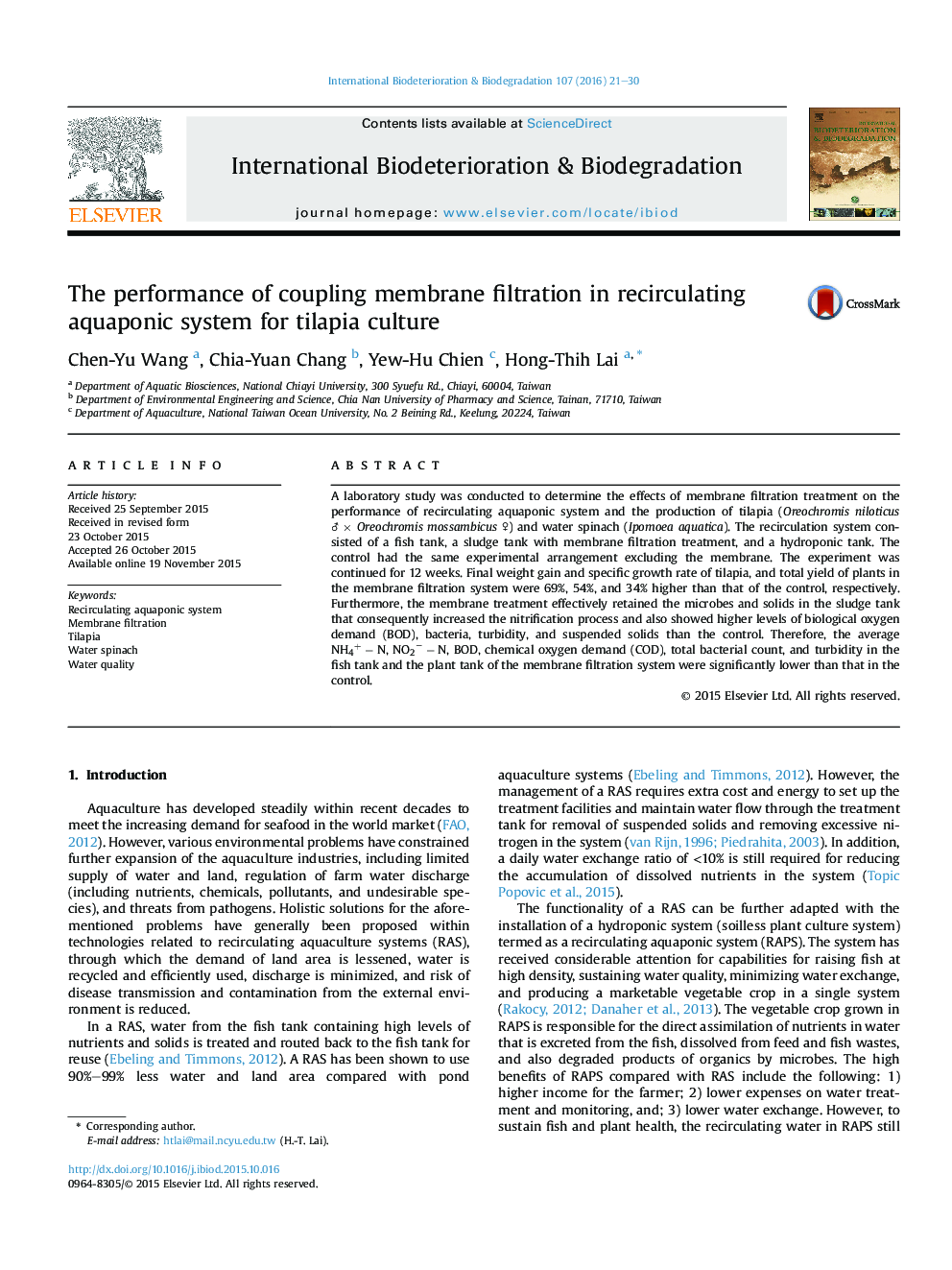| Article ID | Journal | Published Year | Pages | File Type |
|---|---|---|---|---|
| 4364523 | International Biodeterioration & Biodegradation | 2016 | 10 Pages |
•Coupling of membrane filtration with recirculating aquaponic system increased growth of fish and plants.•The design effectively increased the nitrification rates in the sludge tank.•Water quality enhanced in both fish and plant tanks with the present design.•Membrane treatment reduced root clogging and increased the absorption of the plant.
A laboratory study was conducted to determine the effects of membrane filtration treatment on the performance of recirculating aquaponic system and the production of tilapia (Oreochromis niloticus ♂ × Oreochromis mossambicus ♀) and water spinach (Ipomoea aquatica ). The recirculation system consisted of a fish tank, a sludge tank with membrane filtration treatment, and a hydroponic tank. The control had the same experimental arrangement excluding the membrane. The experiment was continued for 12 weeks. Final weight gain and specific growth rate of tilapia, and total yield of plants in the membrane filtration system were 69%, 54%, and 34% higher than that of the control, respectively. Furthermore, the membrane treatment effectively retained the microbes and solids in the sludge tank that consequently increased the nitrification process and also showed higher levels of biological oxygen demand (BOD), bacteria, turbidity, and suspended solids than the control. Therefore, the average NH4+-NNH4+-N, −NO2-NNO2−-N, BOD, chemical oxygen demand (COD), total bacterial count, and turbidity in the fish tank and the plant tank of the membrane filtration system were significantly lower than that in the control.
